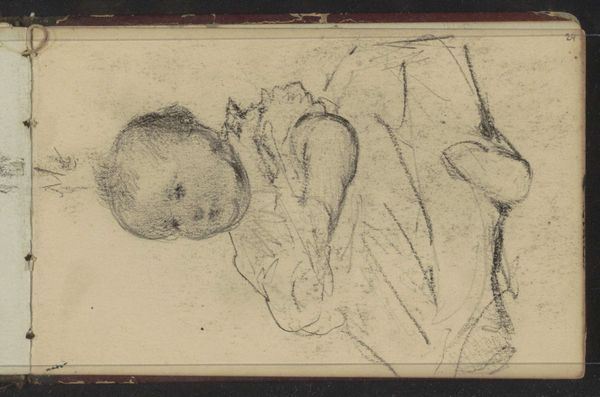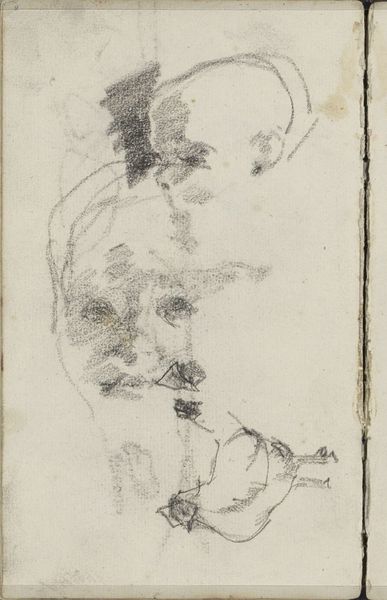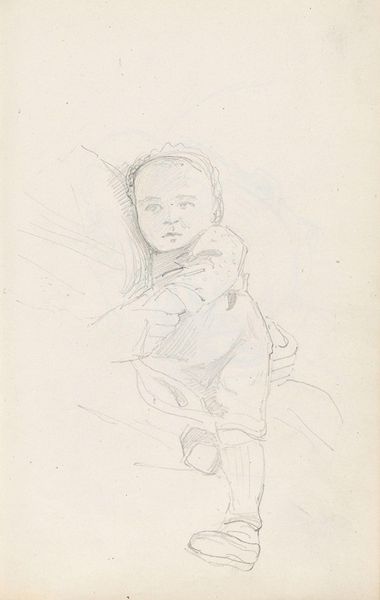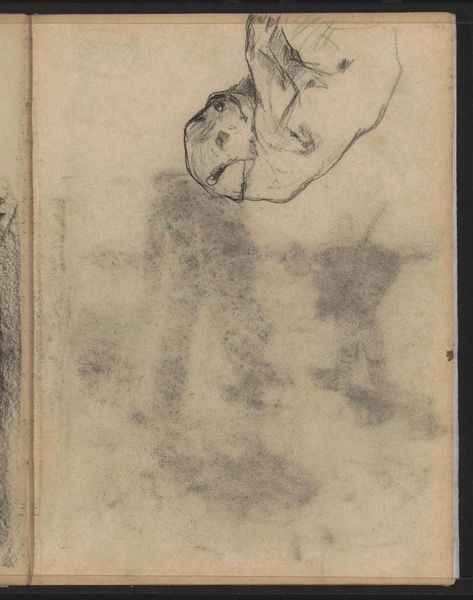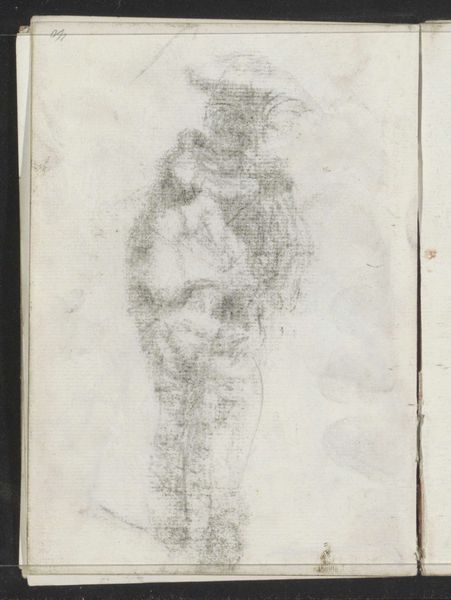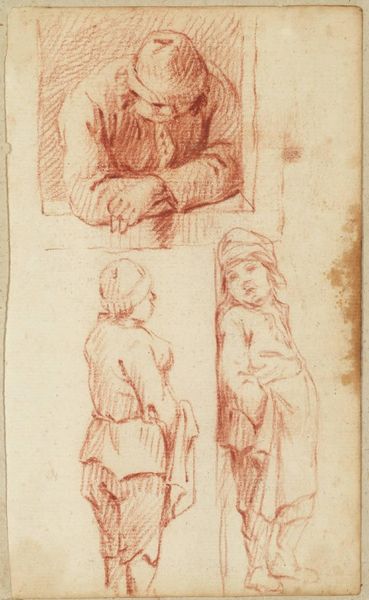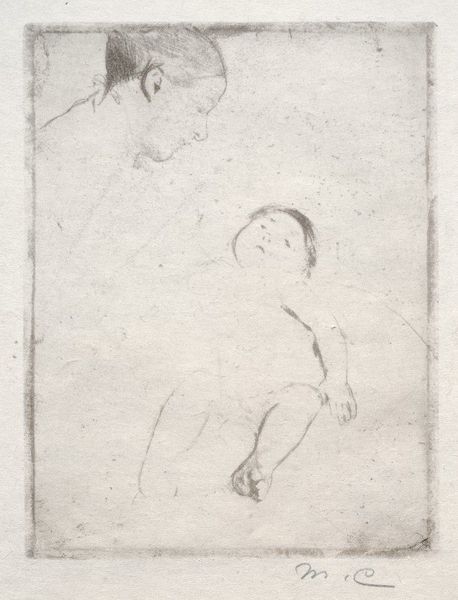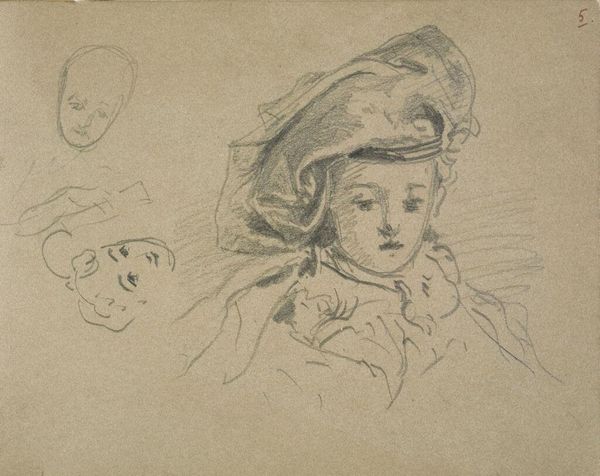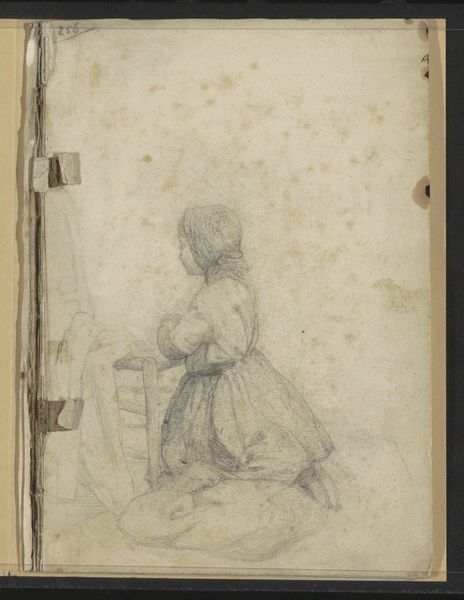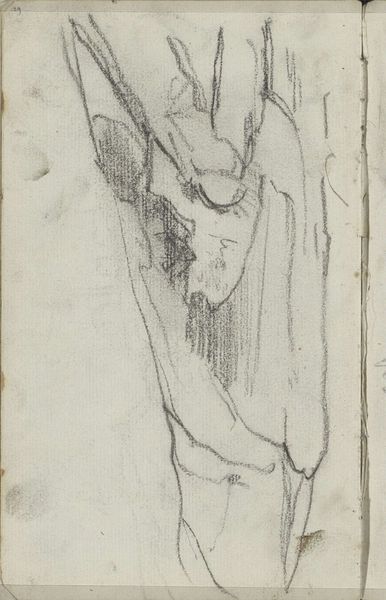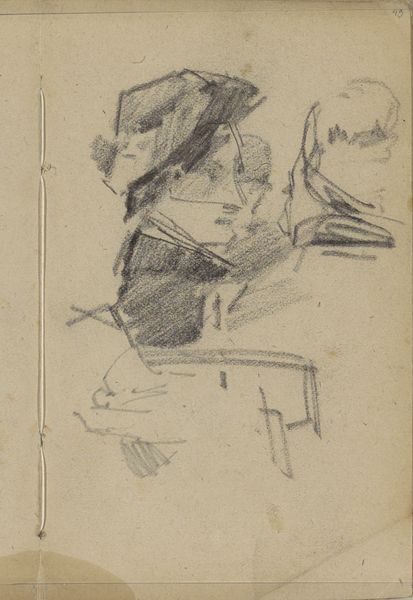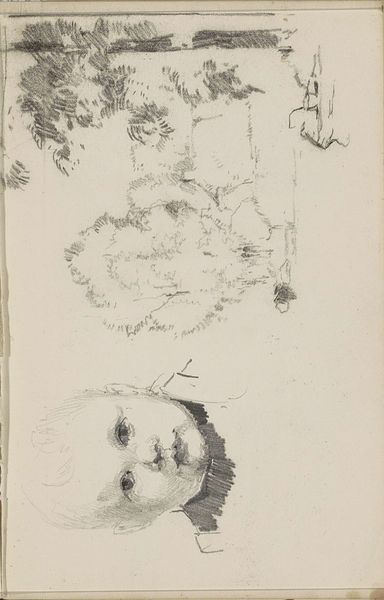
drawing, pencil
#
portrait
#
drawing
#
amateur sketch
#
toned paper
#
light pencil work
#
impressionism
#
pencil sketch
#
sketch book
#
incomplete sketchy
#
figuration
#
personal sketchbook
#
pen-ink sketch
#
pencil
#
sketchbook drawing
#
sketchbook art
#
realism
Copyright: Rijks Museum: Open Domain
Curator: This delicate drawing, entitled "Twee baby's," which translates to "Two Babies," was sketched by George Hendrik Breitner around 1883-1885. You can find this intimate work currently held at the Rijksmuseum. It’s a quick pencil rendering, characteristic of his sketchbooks. Editor: It strikes me as melancholic, despite the subject. There's something about the soft, smudged lines and the slightly forlorn expression of the baby in the foreground that evokes a sense of vulnerability and perhaps even loss. It certainly defies expectations about sentimental depictions of children, wouldn't you say? Curator: Absolutely. Breitner was deeply invested in capturing the reality of everyday life, steering clear of idealized representations. Think about the social context: Breitner's Amsterdam was a city undergoing rapid industrialization. These sketches could offer a glimpse into the lives of ordinary people. Editor: And perhaps an awareness of infant mortality rates during that era. The sketch certainly captures the precariousness of life. The incomplete lines, the way the background baby is almost faded – it speaks to fleeting moments and fragile existence. We should remember also that the artist was part of an emerging group that tried to picture life and not construct idealized scenes, such as in Academic art. Curator: Precisely. Furthermore, his approach challenges the traditional, often sentimental, depiction of children in art, seen through the lens of prevailing social and artistic conventions. Editor: Considering it's a quick sketch, there is still this depth and emotion that surpasses many meticulously rendered portraits of the time. It makes me wonder about Breitner’s relationship with his subject, or perhaps even the symbolism he attributed to the image of a child. How would this piece be seen today, through the lenses of commodification of children images? Curator: A valid point, highlighting the contextual shifts and ethical questions arising across time. Breitner's sketch, now presented within a museum framework, enables a modern audience to consider and critically debate its historical origins and relevance. Editor: Yes. It reveals that even an artist’s fleeting impression holds the potential to speak volumes about societal values and individual experience, but more than anything, what it meant for that artist, that period in time. Curator: It prompts us to look beyond mere representation and actively engage with art as a vehicle for empathy and dialogue about pressing social realities.
Comments
No comments
Be the first to comment and join the conversation on the ultimate creative platform.
